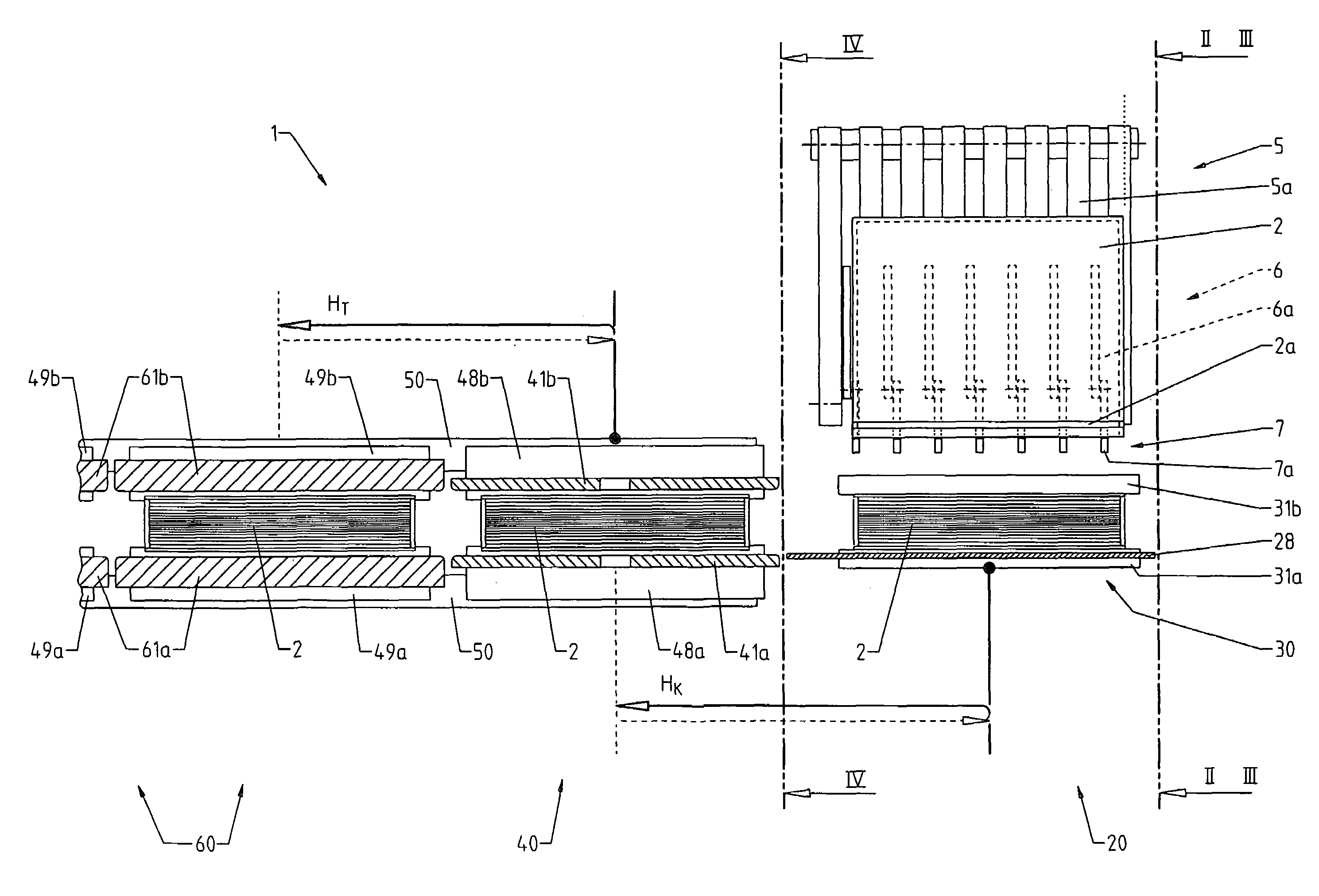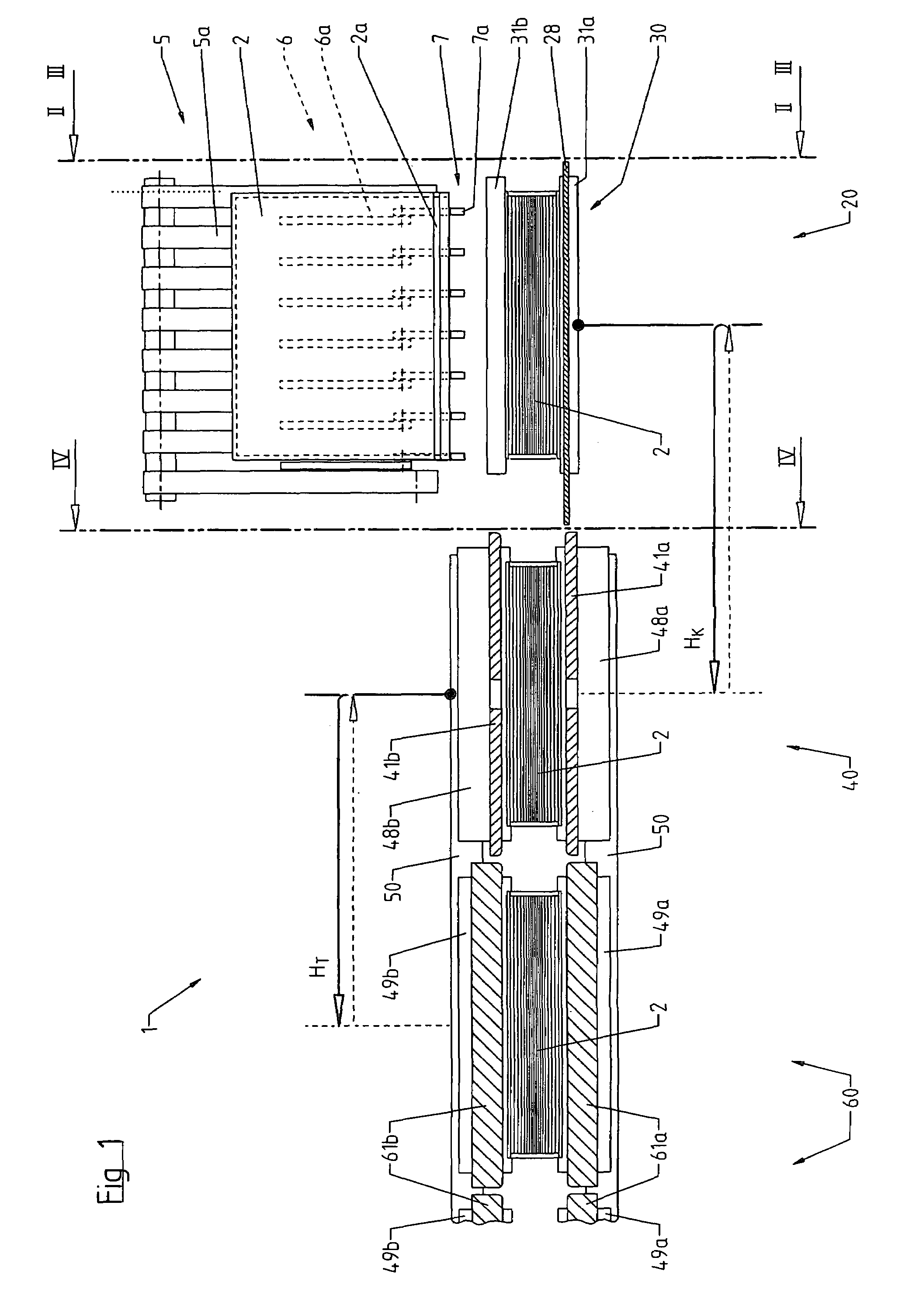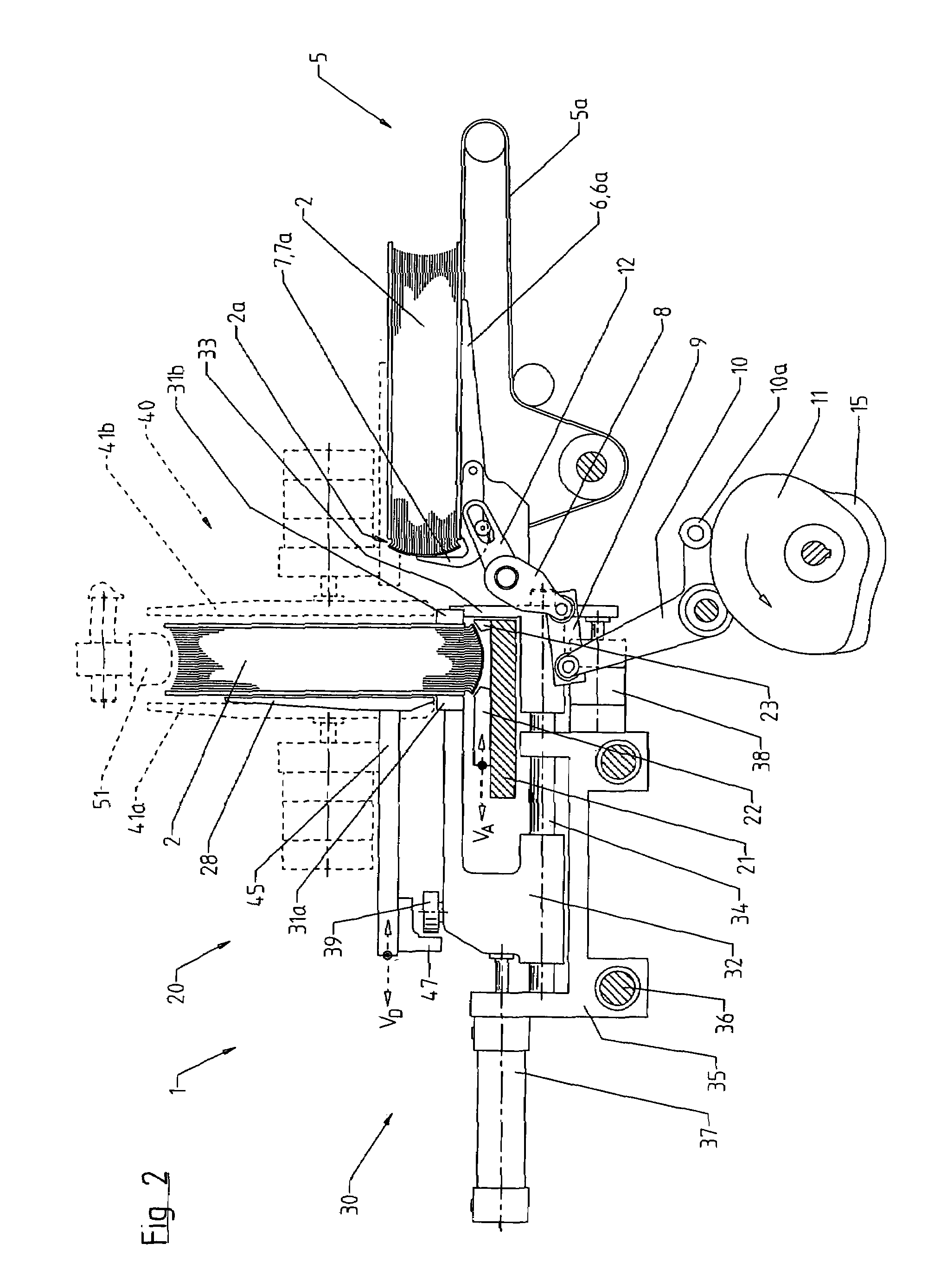Binding-in and pressing machine
a pressing machine and binding technology, applied in the field of binding machines, can solve the problems of limited cycle capacity of this particular construction, and achieve the effect of improving the quality of joint forming and pressing steps, simple and cost-efficient design
- Summary
- Abstract
- Description
- Claims
- Application Information
AI Technical Summary
Benefits of technology
Problems solved by technology
Method used
Image
Examples
Embodiment Construction
[0014]FIG. 1 shows a schematic top view of a binding-in and pressing machine 1 with pressing stations 60 that are arranged in a straight row and equidistantly spaced apart from one another. The pressing stations respectively contain a pair of oppositely arranged press plates 61a, b that serve for exerting pressure upon the sides of a book 2 and can be adjusted with respect to their mutual distance. Heated joint forming rails 49a, b assigned to the pressing stations 60 are respectively arranged opposite of one another pair-by-pair and adjustable with respect to their mutual distance. The joint forming rails form the book case joints 2a. The joint forming rails 49a, b are situated on a carriage 50 and simultaneously serve as a transport means for advancing the books 2 from station to station in a cyclic fashion with a transport stroke HT. The joint forming rails then return into their starting position in order to receive and transport another book 2.
[0015]According to the preferred e...
PUM
 Login to View More
Login to View More Abstract
Description
Claims
Application Information
 Login to View More
Login to View More - R&D
- Intellectual Property
- Life Sciences
- Materials
- Tech Scout
- Unparalleled Data Quality
- Higher Quality Content
- 60% Fewer Hallucinations
Browse by: Latest US Patents, China's latest patents, Technical Efficacy Thesaurus, Application Domain, Technology Topic, Popular Technical Reports.
© 2025 PatSnap. All rights reserved.Legal|Privacy policy|Modern Slavery Act Transparency Statement|Sitemap|About US| Contact US: help@patsnap.com



